Do you have a question about the Cessna 172S Nav III and is the answer not in the manual?
Provides basic data and information of general interest for the airplane.
Details about the engine, propeller, fuel, oil, and weights.
Explanations of common terms, symbols, and abbreviations used in the manual.
Charts to convert between metric, imperial, and U.S. measurement units.
Chart for converting between Celsius and Fahrenheit temperature scales.
Conversion chart for hectopascals to inches of mercury.
Overview of operating limitations, instrument markings, and placards for safe operation.
Defines critical airspeed limitations for safe and effective airplane operation.
Specifies operating limits for the engine, oil, and propeller.
Specifies maximum allowable weights for normal and utility categories.
Defines the forward and aft limits for the airplane's center of gravity.
Details limits for normal and utility category maneuvers and recommended entry speeds.
Outlines total, usable, and unusable fuel capacities and operating procedures.
Covers limitations for the auxiliary audio and 12V power systems.
Specifies operational limitations for the Garmin G1000 system.
Lists information that must be displayed in the form of placards in the airplane.
Provides procedures for coping with emergencies caused by malfunctions or weather.
Lists recommended airspeeds for various emergency operations.
Detailed procedures for engine failure during takeoff, immediately after takeoff, and in flight.
Steps for emergency landing without engine power and precautionary landings.
Procedures for handling engine fires in flight and electrical fires.
Actions to take when encountering inadvertent icing conditions during flight.
Procedures for landing with a flat main tire or a flat nose tire.
Addresses issues with high volts, low volts, and electrical load reduction.
Procedures for PFD airspeed and altitude indicator failures.
Procedures for PFD attitude and HSI failures.
Actions for low vacuum conditions and annunciator warnings.
Provides additional information beyond checklists for emergency situations.
Provides procedures and instructions for normal operations using standard equipment.
Detailed checklist for inspecting the airplane before each flight.
Procedures and precautions to follow before starting the engine.
Checklist items to perform before initiating takeoff.
Instructions for normal, short field, and soft/rough field takeoff procedures.
Guidelines for normal climbs at various altitudes and conditions.
Guidelines for maintaining cruise speed, altitude, and mixture settings.
Procedures for descending the aircraft to a lower altitude.
Checklist items to perform before commencing the landing phase.
Procedures for normal, short field, crosswind, and balked landings.
Considerations and procedures for operating the airplane in cold temperatures.
Explains how performance data charts are presented and used for flight planning.
Charts and data for determining takeoff distances under various conditions.
Performance data for cruise flight, including airspeed and fuel flow.
Estimates total fuel requirement for the flight, including climb and reserve.
Provides landing distance information for various conditions.
Provides airspeed calibration data for normal and alternate static sources.
Lists stall speeds based on flap setting and angle of bank at maximum weight.
Chart to determine crosswind limits based on runway conditions.
Data on climb performance at maximum weight and various temperatures.
Chart illustrating range based on altitude and power settings.
Describes procedures for establishing the basic empty weight and moment.
Step-by-step instructions for weighing the airplane and determining its CG.
Information to operate the Cessna within prescribed weight and CG limitations.
A detailed list of all Cessna equipment available for the Model 172S.
Provides description and operation of the airplane and its systems.
Describes the construction and structure of the airplane's airframe.
Explains the airplane's control system, including ailerons, rudder, and elevator.
Details the layout and components of the pilot's and center instrument panels.
Describes the primary flight instruments like attitude, airspeed, and altitude indicators.
Explains procedures for taxiing and maneuvering the aircraft on the ground.
Details the operation and control of the wing flap system.
Describes the tricycle landing gear, including nose and main wheels and brakes.
Provides information on the engine, its controls, and instruments.
Details the airplane's fuel system, including tanks, selector, pumps, and indicators.
Explains the airplane's 28 VDC electrical system, including battery, alternator, and buses.
Covers the operation of exterior and interior lighting systems.
Describes the vacuum system and its associated instruments for standby systems.
Details the Garmin G1000 avionics system and its components.
Information on cooling fans, antennas, and other avionics support items.
Details on cabin features like ELT, fire extinguisher, and CO detection system.
Outlines recommended procedures for ground handling, care, and servicing.
Information on locating serial numbers, PC, and TC on the airplane.
Information on receiving service requirements and product changes from Cessna.
Lists various publications and flight operation aids furnished with the airplane.
Checklist for miscellaneous data, information, and licenses in the airplane file.
Details FAA required annual and 100-hour inspections.
Procedures for towing, parking, tie-down, jacking, and leveling the aircraft.
Guidance on servicing requirements and contacting local Cessna Service Stations.
Specifications and recommendations for engine oil and its viscosity.
Approved fuel grades, capacity, additives, and contamination checks.
Procedures for cleaning and maintaining the airplane's exterior and interior.
Information on operating the Pointer ELT, including its components and activation.
Steps for activating and managing the ELT during emergency situations.
Information for Canadian operation of Cessna Model 172S with Nav III avionics.
Specifies limitations for Canadian certified airplanes.
Emergency procedures specific to Canadian certified airplanes.
Overview of the KAP 140 Autopilot modes and controls.
Critical limitations for the safe operation of the autopilot system.
Procedures for handling autopilot malfunctions and recovery.
Step-by-step procedures for engaging and operating the autopilot.
Information on the winterization kit and its installation for cold weather.
Placard requirements and limitations when the winterization kit is installed.
Information for Brazilian operation of Cessna Model 172S with Nav III avionics.
Specifies limitations for Brazilian certified airplanes.
Emergency procedures specific to Brazilian certified airplanes.
Normal procedures specific to Brazilian certified airplanes.
Performance data specific to Brazilian certified airplanes.
Information on operating the Artex C406-N ELT, including its functions and signals.
Procedures for activating and managing the Artex C406-N ELT during emergencies.
Normal operation and performance details for the Artex C406-N ELT.
Details the Bendix/King KR87 ADF system, its controls, and displays.
Step-by-step instructions for operating the ADF system.
Notes on potential causes of erroneous ADF bearings and operation.
Equipment required for airworthiness in RF and CIS countries operations.
Approved fuel grades, capacity, and additives for RF/CIS operations.
Altitude, headwind, tailwind, and crosswind limits for RF/CIS operations.
Emergency procedures specific to RF and CIS countries operations.
Information on operating the Artex ME406 ELT, including its functions and signals.
Procedures for activating and managing the Artex ME406 ELT during emergencies.
Normal operation and performance details for the Artex ME406 ELT.
Information on operational eligibility for JAR-OPS in RF and CIS countries.
Details the general operational eligibility requirements.
Eligibility of GPS/GNSS systems for navigation in RF/CIS operations.
Eligibility of GTX 33 Transponder for SSR Mode S operations.
Provides basic data and information of general interest for the airplane.
Details about the engine, propeller, fuel, oil, and weights.
Explanations of common terms, symbols, and abbreviations used in the manual.
Charts to convert between metric, imperial, and U.S. measurement units.
Chart for converting between Celsius and Fahrenheit temperature scales.
Conversion chart for hectopascals to inches of mercury.
Overview of operating limitations, instrument markings, and placards for safe operation.
Defines critical airspeed limitations for safe and effective airplane operation.
Specifies operating limits for the engine, oil, and propeller.
Specifies maximum allowable weights for normal and utility categories.
Defines the forward and aft limits for the airplane's center of gravity.
Details limits for normal and utility category maneuvers and recommended entry speeds.
Outlines total, usable, and unusable fuel capacities and operating procedures.
Covers limitations for the auxiliary audio and 12V power systems.
Specifies operational limitations for the Garmin G1000 system.
Lists information that must be displayed in the form of placards in the airplane.
Provides procedures for coping with emergencies caused by malfunctions or weather.
Lists recommended airspeeds for various emergency operations.
Detailed procedures for engine failure during takeoff, immediately after takeoff, and in flight.
Steps for emergency landing without engine power and precautionary landings.
Procedures for handling engine fires in flight and electrical fires.
Actions to take when encountering inadvertent icing conditions during flight.
Procedures for landing with a flat main tire or a flat nose tire.
Addresses issues with high volts, low volts, and electrical load reduction.
Procedures for PFD airspeed and altitude indicator failures.
Procedures for PFD attitude and HSI failures.
Actions for low vacuum conditions and annunciator warnings.
Provides additional information beyond checklists for emergency situations.
Provides procedures and instructions for normal operations using standard equipment.
Detailed checklist for inspecting the airplane before each flight.
Procedures and precautions to follow before starting the engine.
Checklist items to perform before initiating takeoff.
Instructions for normal, short field, and soft/rough field takeoff procedures.
Guidelines for normal climbs at various altitudes and conditions.
Guidelines for maintaining cruise speed, altitude, and mixture settings.
Procedures for descending the aircraft to a lower altitude.
Checklist items to perform before commencing the landing phase.
Procedures for normal, short field, crosswind, and balked landings.
Considerations and procedures for operating the airplane in cold temperatures.
Explains how performance data charts are presented and used for flight planning.
Charts and data for determining takeoff distances under various conditions.
Performance data for cruise flight, including airspeed and fuel flow.
Estimates total fuel requirement for the flight, including climb and reserve.
Provides landing distance information for various conditions.
Provides airspeed calibration data for normal and alternate static sources.
Lists stall speeds based on flap setting and angle of bank at maximum weight.
Chart to determine crosswind limits based on runway conditions.
Data on climb performance at maximum weight and various temperatures.
Chart illustrating range based on altitude and power settings.
Describes procedures for establishing the basic empty weight and moment.
Step-by-step instructions for weighing the airplane and determining its CG.
Information to operate the Cessna within prescribed weight and CG limitations.
A detailed list of all Cessna equipment available for the Model 172S.
Provides description and operation of the airplane and its systems.
Describes the construction and structure of the airplane's airframe.
Explains the airplane's control system, including ailerons, rudder, and elevator.
Details the layout and components of the pilot's and center instrument panels.
Describes the primary flight instruments like attitude, airspeed, and altitude indicators.
Explains procedures for taxiing and maneuvering the aircraft on the ground.
Details the operation and control of the wing flap system.
Describes the tricycle landing gear, including nose and main wheels and brakes.
Provides information on the engine, its controls, and instruments.
Details the airplane's fuel system, including tanks, selector, pumps, and indicators.
Explains the airplane's 28 VDC electrical system, including battery, alternator, and buses.
Covers the operation of exterior and interior lighting systems.
Describes the vacuum system and its associated instruments for standby systems.
Details the Garmin G1000 avionics system and its components.
Information on cooling fans, antennas, and other avionics support items.
Details on cabin features like ELT, fire extinguisher, and CO detection system.
Outlines recommended procedures for ground handling, care, and servicing.
Information on locating serial numbers, PC, and TC on the airplane.
Information on receiving service requirements and product changes from Cessna.
Lists various publications and flight operation aids furnished with the airplane.
Checklist for miscellaneous data, information, and licenses in the airplane file.
Details FAA required annual and 100-hour inspections.
Procedures for towing, parking, tie-down, jacking, and leveling the aircraft.
Guidance on servicing requirements and contacting local Cessna Service Stations.
Specifications and recommendations for engine oil and its viscosity.
Approved fuel grades, capacity, additives, and contamination checks.
Procedures for cleaning and maintaining the airplane's exterior and interior.
Information on operating the Pointer ELT, including its components and activation.
Steps for activating and managing the ELT during emergency situations.
Information for Canadian operation of Cessna Model 172S with Nav III avionics.
Specifies limitations for Canadian certified airplanes.
Emergency procedures specific to Canadian certified airplanes.
Overview of the KAP 140 Autopilot modes and controls.
Critical limitations for the safe operation of the autopilot system.
Procedures for handling autopilot malfunctions and recovery.
Step-by-step procedures for engaging and operating the autopilot.
Information on the winterization kit and its installation for cold weather.
Placard requirements and limitations when the winterization kit is installed.
Information for Brazilian operation of Cessna Model 172S with Nav III avionics.
Specifies limitations for Brazilian certified airplanes.
Emergency procedures specific to Brazilian certified airplanes.
Normal procedures specific to Brazilian certified airplanes.
Performance data specific to Brazilian certified airplanes.
Information on operating the Artex C406-N ELT, including its functions and signals.
Procedures for activating and managing the Artex C406-N ELT during emergencies.
Normal operation and performance details for the Artex C406-N ELT.
Details the Bendix/King KR87 ADF system, its controls, and displays.
Step-by-step instructions for operating the ADF system.
Notes on potential causes of erroneous ADF bearings and operation.
Equipment required for airworthiness in RF and CIS countries operations.
Approved fuel grades, capacity, and additives for RF/CIS operations.
Altitude, headwind, tailwind, and crosswind limits for RF/CIS operations.
Emergency procedures specific to RF and CIS countries operations.
Information on operating the Artex ME406 ELT, including its functions and signals.
Procedures for activating and managing the Artex ME406 ELT during emergencies.
Normal operation and performance details for the Artex ME406 ELT.
Information on operational eligibility for JAR-OPS in RF and CIS countries.
Details the general operational eligibility requirements.
Eligibility of GPS/GNSS systems for navigation in RF/CIS operations.
Eligibility of GTX 33 Transponder for SSR Mode S operations.
| Manufacturer | Cessna |
|---|---|
| Model | 172S Nav III |
| Engine | Lycoming IO-360-L2A |
| Horsepower | 180 hp |
| Cruise Speed | 124 knots (143 mph, 230 km/h) |
| Service Ceiling | 13, 500 ft (4, 115 m) |
| Takeoff Distance (Ground Roll) | 960 ft (293 m) |
| Landing Distance (Ground Roll) | 575 ft (175 m) |
| Seating Capacity | 4 |
| Type | Single-engine, high-wing |
| Propeller | 2-blade, constant-speed |
| Fuel Capacity | 56 gallons |
| Wingspan | 36 ft 1 in |
| Length | 27 ft 2 in |
| Height | 8 ft 11 in |
| Stall Speed | 47 knots |
| Range | 640 nautical miles |
| Rate of Climb | 720 ft/min (3.7 m/s) |
| Avionics | Garmin G1000 |
| Maximum Takeoff Weight | 2, 550 lbs (1, 157 kg) |
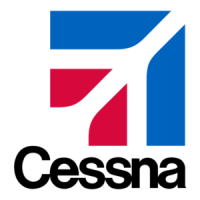
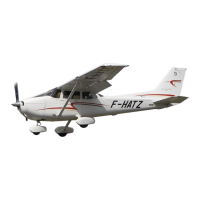
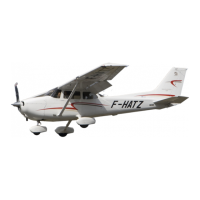

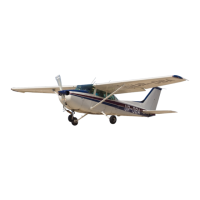
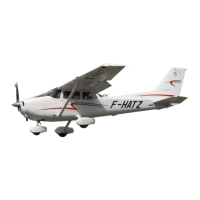


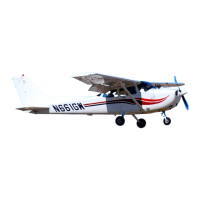
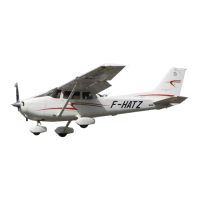
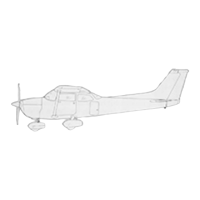
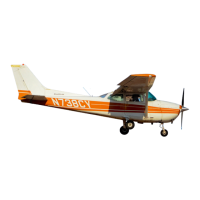
